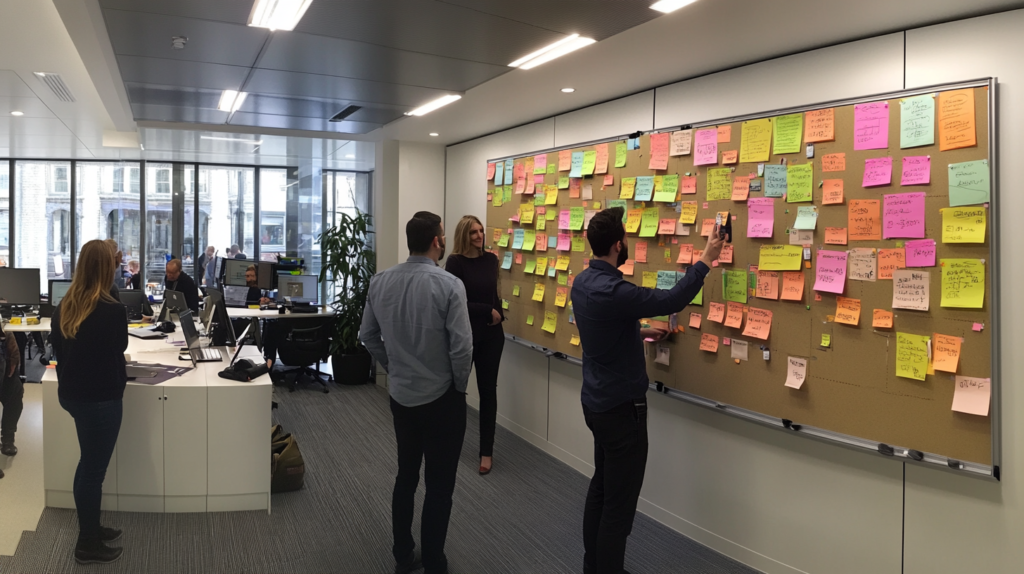Top Agile Sprint Planning Techniques for Perfect Team Alignment

Effective sprint planning is the cornerstone of successful Agile project management. By leveraging the right techniques, teams can achieve optimal performance, ensure alignment, and deliver high-value outcomes consistently. This guide explores comprehensive Agile sprint planning techniques, diving deep into methods, tools, and best practices that drive productivity and collaboration.
Table of Contents
- Backlog Prioritization
- User Story Estimation
- Velocity Calculation
- Sprint Backlog Creation
- Collaborative Planning Sessions
- Task Breakdown and Story Points
- Capacity Planning and Timeboxing
- Cross-Functional Team Alignment
Backlog Prioritization
Backlog prioritization ensures that the most valuable and impactful tasks are addressed first. It’s a critical step in sprint planning as it sets the foundation for productive iterations.
Understanding Backlog Prioritization
Backlog prioritization involves organizing user stories, tasks, and features in order of importance. By using techniques like MoSCoW or Kano models, teams focus on delivering what matters most to stakeholders.
Tools for Prioritization
Leverage tools such as JIRA, Trello, or Deskcove to streamline the prioritization process. These platforms provide visibility, enabling teams to collaborate effectively.
Benefits of Effective Prioritization
Clear prioritization enhances decision-making, reduces bottlenecks, and ensures the delivery of high-priority features within the sprint timeframe.
User Story Estimation
Estimating user stories accurately is vital to predicting sprint workload and maintaining realistic expectations.
What is User Story Estimation?
User story estimation is the process of evaluating the effort required to complete a user story. Teams use various Agile estimation techniques such as story points or T-shirt sizing.
Popular Estimation Techniques
Planning poker, affinity mapping, and Fibonacci sequencing are popular techniques that foster team alignment and improve estimation accuracy.
Common Challenges in Estimation
Unclear acceptance criteria and incomplete requirements can hinder estimation. Regular refinement sessions mitigate these issues, fostering better predictions.
Velocity Calculation
Understanding team velocity is essential for setting realistic sprint goals and improving long-term planning.
Defining Velocity
Velocity measures the amount of work a team can complete during a sprint, typically represented by story points. Tracking this metric helps forecast future sprint capacities.
How to Calculate Velocity
To calculate velocity, sum up the story points completed across past sprints and divide by the number of sprints. This provides an average that guides planning efforts.
Improving Velocity Over Time
Continuous improvement through retrospectives, training, and eliminating blockers can steadily increase velocity.
Sprint Backlog Creation
A well-defined sprint backlog serves as the operational blueprint for the sprint, outlining tasks and responsibilities clearly.
Creating the Sprint Backlog
Start by selecting prioritized user stories and breaking them into actionable tasks. Ensure that each task is achievable within the sprint’s timebox.
Managing the Sprint Backlog
Use tools like Deskcove to manage and track sprint backlog items effectively. Visual boards help teams stay aligned and focused.
Benefits of a Clear Sprint Backlog
A clear backlog improves accountability, visibility, and ensures teams focus on delivering the sprint goal.
Collaborative Planning Sessions
Effective sprint planning requires active participation from all team members. Collaboration ensures alignment and commitment to sprint goals.
Why Collaboration Matters
Collaboration fosters shared understanding, enhances creativity, and ensures that all perspectives are considered during planning.
Tips for Effective Collaboration
Encourage open communication, utilize structured frameworks, and adopt tools like Deskcove to facilitate seamless collaboration.
Overcoming Collaboration Challenges
Address issues such as conflicting schedules or communication gaps through regular Scrum ceremonies and effective facilitation techniques.
Task Breakdown and Story Points
Breaking tasks into manageable units and assigning story points enhances focus and predictability.
Breaking Down Tasks
Divide complex stories into smaller, actionable tasks to ensure clarity and prevent bottlenecks during execution.
Assigning Story Points
Use story points to measure effort and complexity rather than time, fostering a more flexible planning approach.
Validating Story Points
Regularly review and validate story point estimates to ensure alignment with team capabilities and project goals.
Capacity Planning and Timeboxing
Planning team capacity and timeboxing activities are crucial for ensuring that sprints remain realistic and productive.
Calculating Capacity
Determine capacity by evaluating team availability and factoring in planned leaves or other commitments. Use historical data to enhance accuracy.
Benefits of Timeboxing
Timeboxing keeps tasks focused and ensures that teams avoid overcommitment, maintaining consistent delivery cycles.
Strategies for Effective Timeboxing
Set clear time limits, monitor progress, and adjust as needed during daily stand-ups or sprint reviews.
Cross-Functional Team Alignment
Aligning cross-functional teams ensures smooth collaboration and enhances sprint outcomes.
Importance of Alignment
Alignment minimizes misunderstandings and fosters a shared vision across development, testing, and other functional areas.
Alignment Strategies
Regular sync-ups, shared documentation, and integrated tools like Deskcove help bridge gaps between teams.
Challenges in Cross-Functional Teams
Diverse skill sets and priorities can create friction. Foster open communication and shared goals to overcome these hurdles.
About Deskcove
Deskcove provides comprehensive tools for Agile teams, including backlog management, collaborative planning features, and customizable dashboards. Whether you’re estimating user stories or managing sprint backlogs, Deskcove simplifies the process and enhances productivity. Explore Deskcove to supercharge your Agile practices today!
FAQ
- What is the primary purpose of sprint planning? Sprint planning ensures teams set clear goals and allocate resources effectively for a successful sprint.
- How do you estimate tasks in Agile? Teams use methods like planning poker, T-shirt sizing, or story points to estimate tasks.
- What are some common tools for sprint planning? Popular tools include Deskcove, JIRA, and Trello for backlog management and task tracking.


